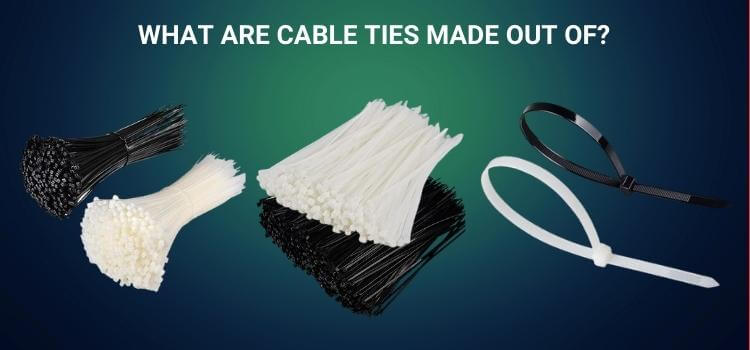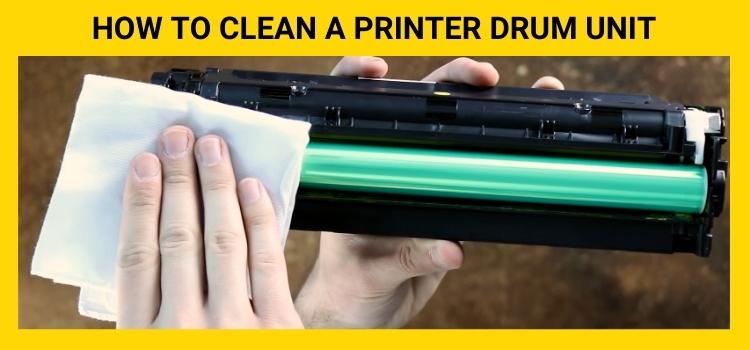As an Amazon Associate I earn from qualifying purchases.

Cable ties, also called zip ties or wire ties, are adaptable fastening devices necessary for our daily lives.
From securing cables and wires to organizing and bundling items, cable ties offer a convenient and effective solution. However, have you ever wondered what materials go into making these handy tools? This article will go through the components used to make cable ties, their unique qualities, and the things to consider when choosing the best cable tie for your particular application.
Understanding Cable Ties
Cable ties are simple yet ingenious devices designed to secure and bundle items. They consist of a flexible strap with ridges on one side and a small, often toothed, mechanism on the other. When the belt is pulled through the tool, it forms a loop that tightly holds items together.
What Are Cable Ties Made Out Of?
Cable ties are made from various materials, each with its own set of advantages and applications. Let’s delve into the most commonly used materials for cable ties:
Nylon Cable Ties
Nylon is one of the most popular materials for manufacturing cable ties. It provides exceptional strength, toughness, and wear-and-tear resistance.
Nylon cable ties come in various grades, most commonly Nylon 6/6. These ties are appropriate for indoor and outdoor applications because of their high tensile strength and ability to endure a variety of environmental factors.
Stainless Steel Cable Ties
Stainless steel cable ties are known for their exceptional strength and corrosion resistance. They are ideal for applications where exposure to harsh environments, extreme temperatures, or chemicals is a concern. These ties are commonly used in the aerospace, marine, and oil and gas industries.
Plastic Cable Ties
Plastic cable ties, often made from polypropylene, are lightweight and economical. While they may have a different level of strength than nylon or stainless steel ties, they are suitable for many everyday applications, such as organizing cables and securing small items.
Releasable Cable Ties
Releasable cable ties are typically made from nylon and designed for applications requiring adjustments or reusability. Their unique ratchet design allows users to release and reuse them without damaging the connection.
Heat-Resistant Cable Ties
For applications where cables and wires are exposed to high temperatures, heat-resistant cable ties are the best choice. These ties are often made from specialty materials like heat-stabilized nylon, capable of withstanding temperatures up to 185°C (365°F).
Metal Detectable Cable Ties
Metal-detectable cable ties are employed in industries where contamination prevention is crucial, such as food processing.
Colored Cable Ties
Colored cable ties are made from nylon and come in various vibrant colors, enabling color coding for organization and identification purposes. They are often used in data centers, electrical installations, and other applications where differentiation is necessary.
UV-Resistant Cable Ties
When exposed to prolonged sunlight, regular cable ties may degrade over time. UV-resistant cable ties are designed to withstand UV rays. They are suitable for outdoor applications, such as securing solar panels and outdoor electrical installations.
Selecting the Right Cable Tie
Choosing the appropriate cable tie for your specific application involves considering several factors. Here are some key considerations to keep in mind:
Environmental Conditions
Assess the environmental conditions where the cable ties will be used. If it’s an outdoor application, consider UV resistance and weather durability. For harsh environments, opt for stainless steel ties with high corrosion resistance.
Tensile Strength
Determine the required tensile strength based on the weight and size of the secured objects. Nylon cable ties offer various tensile strength options suitable for multiple applications.
Temperature Requirements
For applications involving extreme temperatures, select heat-resistant or cold-resistant cable ties accordingly.
Reusability
If the application requires adjustments or regular changes, opt for releasable cable ties that can be reused multiple times.
Color Coding
For organizational purposes, consider using colored cable ties to distinguish between different groups of cables or items.
Advantages and Applications of Cable Ties
Cable ties offer numerous advantages and have a wide range of applications:
Organizing Wires and Cables
Cable ties are widely used to manage and organize wires and cables, reducing clutter and improving safety.
Securing Items
From securing bags and packages to fastening gardening plants, cable ties are versatile and reliable fasteners.
Outdoor Applications
Due to their sturdiness and resilience to the elements, nylon and stainless steel cable ties are perfect for outdoor applications.
Industrial Use
Cable ties are indispensable for securing hoses, pipes, and other industry equipment.
DIY Projects
Hobbyists and DIY enthusiasts often use cable ties in creative projects due to their ease of use and adaptability.
FAQs
A: Most cable ties made from nylon or polypropylene are recyclable. However, checking with your local recycling facility for proper disposal instructions is essential.
A: While plastic cable ties can be used outdoors, they may not withstand prolonged exposure to UV rays. For outdoor applications, it’s better to use UV-resistant cable ties.
A: Releasable cable ties have a small lever or release mechanism that allows you to disengage the ratchet and open the connection without cutting it. Press the lever to release the tie and use it again.
A: Yes, metal-detectable cable ties are safe for food-related applications. They are made from food-grade materials and are designed to be easily detected and removed if any part accidentally contaminates the food.
A: Yes, stainless steel cable ties are highly corrosion-resistant and suitable in corrosive environments, such as marine or chemical industries.
A: Yes, you can paint over colored cable ties, but it’s essential to use paint compatible with the material of the relationship to ensure adhesion and longevity.
Wrapping Things Up
Cable ties are indispensable tools for fastening and organizing various items. You can choose the best cable tie for your requirements by being well-informed about the materials used to create them. From nylon and stainless steel to heat-resistant and UV-resistant options, there’s a cable tie for every application. So, whether securing cables at home or using them in industrial settings, choosing the right cable tie ensures reliable and efficient fastening.
When selecting cable ties, consider environmental conditions, tensile strength, temperature requirements, and reusability. By making the right choice, you can optimize the performance and longevity of your cable ties.
Related Post
Amazon and the Amazon logo are trademarks of Amazon.com, Inc, or its affiliates.





Leave a Reply